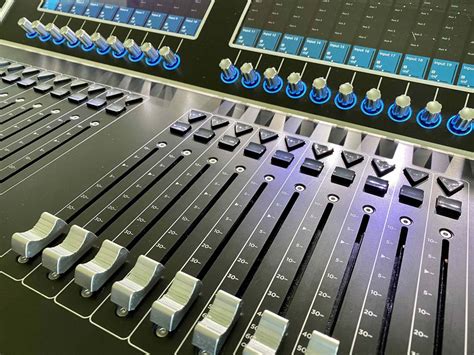As I’ve started working more on the production side of things recently, and my home venue is replacing its beloved but falling-apart SC48s, I’ve found myself learning new consoles left and right. This month I thought I would lay out the process I use to get the hang of things when walking into a board I’ve never used before, although, of course, everyone will have their own method.
STEP ONE: SURFACE LEVEL
The first thing I do is open an existing file that is pre-routed to play around in. That way I don’t have to worry about the deeper settings and configuration yet. My goal is to get comfortable on the board at a surface level, so that I could theoretically walk into a room with someone else’s start file already up and mix a show on it.
I start with the simple:
Can I pink the monitors or PA system?
Can I get music playing through the monitors or PA system?
Can I label and/or color-code my inputs?
Can I connect a mic and get my voice sent to the monitors and/or PA?
Can I put some basic EQ, and compression, on that mic?
Can I save, load, and transfer files easily?
Then I move on to some more complex things:
Can I route that mic through some reverb or other effects?
Can I link channels or make them stereo?
Can I change my patching efficiently?
If there’s a virtual soundcheck set up, how is that routed?
Can I build a mix relatively quickly?
STEP TWO: BACKEND
The next thing I do is load a default template file and try to build myself a start file. This way I can get familiar with all of the deeper functions of the console, see what settings exist, and configure and patch the file from scratch.
Can I configure my number of inputs, auxes, etc., and patch them correctly?
Can I route my matrices (for FOH) and/or auxes (for monitors)?
Can I configure my solo bus, talkback mic, and oscillator?
Can I set my customizable user keys?
Can I customize my fader banks and layers?
Can I set up and route effects?
Can I color-code my channel strips?
STEP THREE: BUILD A MOCK FILE
The last thing I do, if there’s time, is to build a file from scratch. Starting completely from scratch (or, if it exists, the start file I’ve already made), I go through the entire process as if I was running a show for a specific band. I normally build a file for the artist I do sound for because it’s an input list I know off of the top of my head and then I have a starting point of a file for if we ever do a show on one of these consoles, but it doesn’t really matter if you’re building a file for a specific artist or a generic rock show. The goal is to start from the ground up and do the entire process from start to finish: inputs, outputs, labels, arrange layers and locations, route effects, talkback, monitoring, house music, and pink noise.
